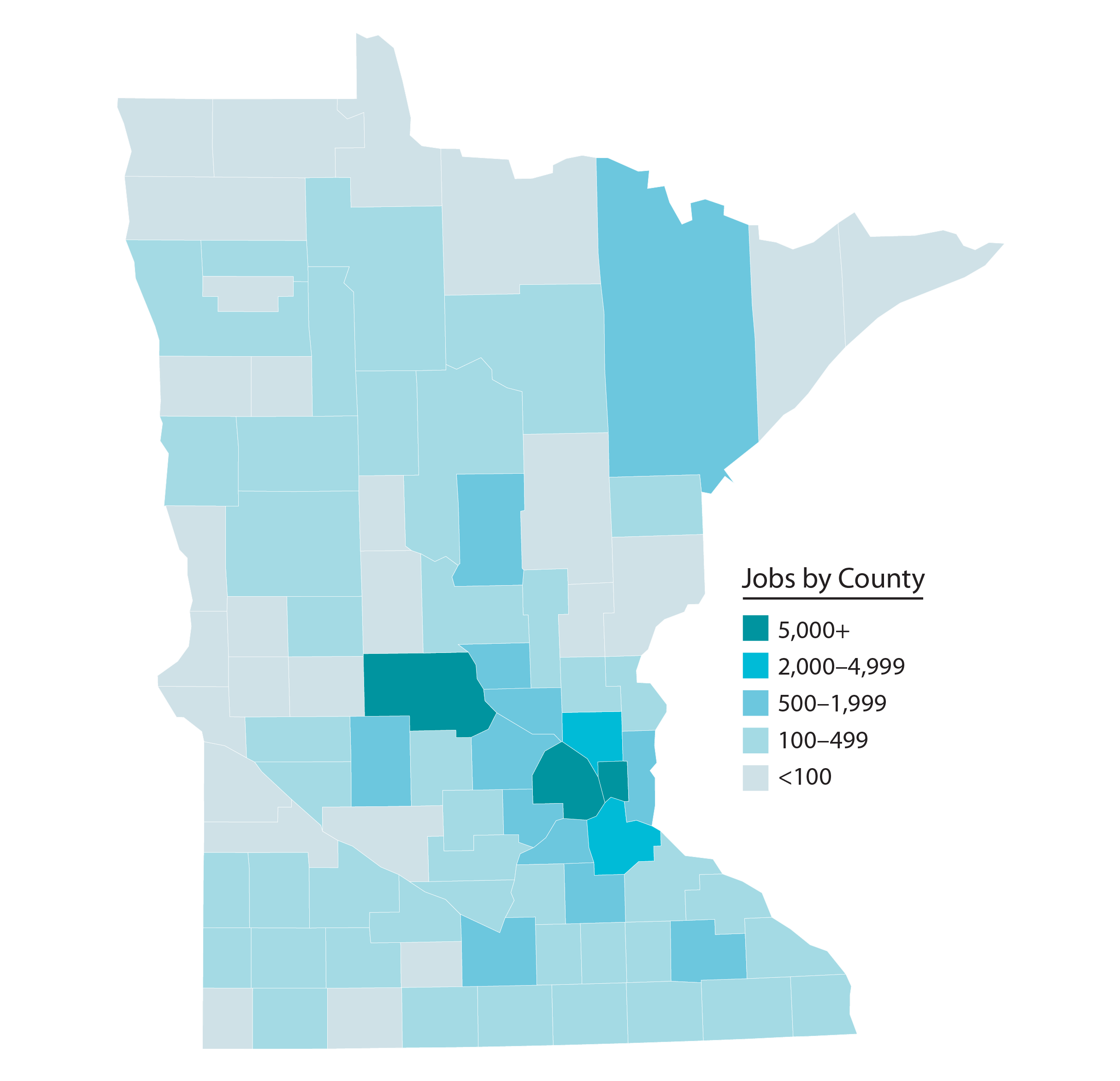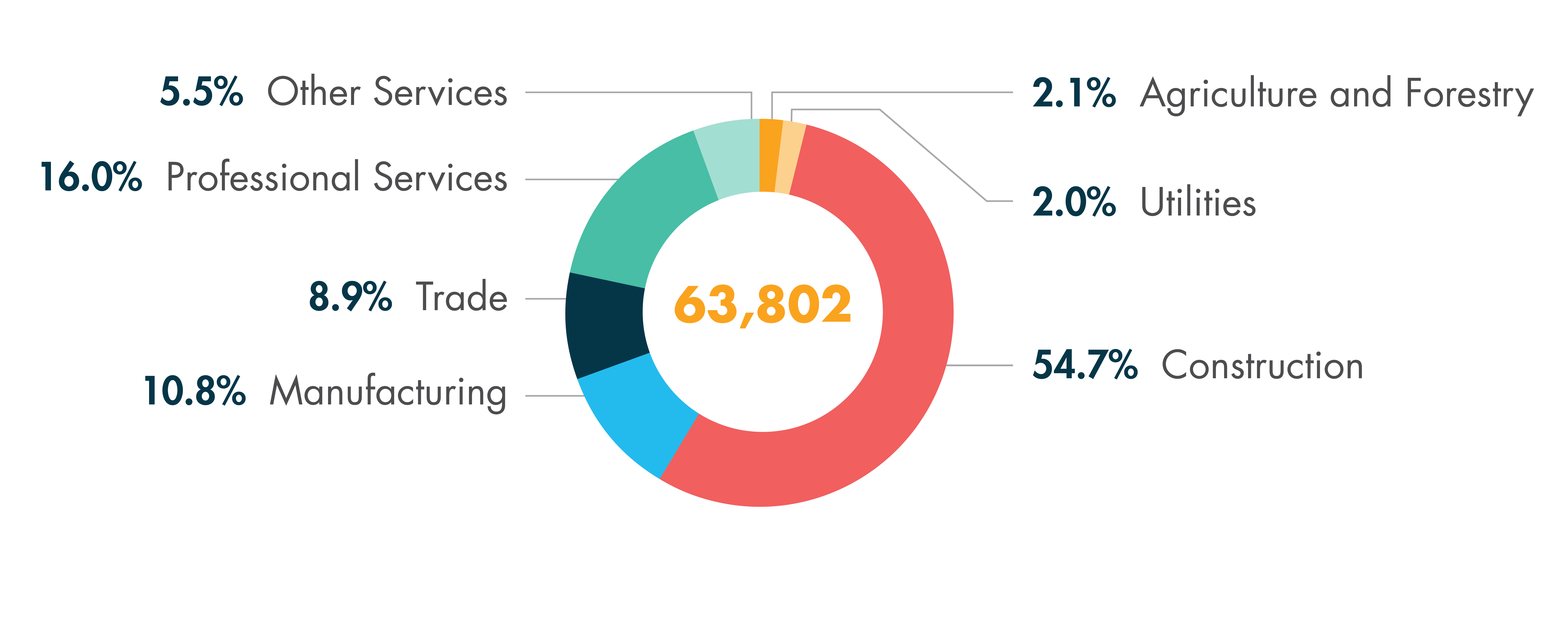Clean energy and clean vehicle jobs in Minnesota set a record in 2024, growing to more than 63,000 jobs – a four percent increase over the previous year. Following federal climate investments passed in 2022 and a statewide 100% carbon-free electricity standard passed in 2023, the industry is poised for continued growth.
Quick Facts
Clean energy and clean vehicle companies employ 63,802 Minnesotans, topping the pre-COVID-19 record of 61,637 set in 2019. Jobs increased 2.6 percent (+1646) in 2024. Clean energy’s economic role in the region is vital: the industry added jobs almost five times faster than Minnesota’s overall economy, and nearly four times as many Minnesotans work in clean energy than the number of lawyers, web developers, and real estate agents combined. Job growth is expected to surge in 2025 (+6 percent). However, if federal clean energy and clean vehicle incentives are rolled back, the job growth and resurgence of clean energy manufacturing could be at risk.
Clean Energy Jobs in Minnesota

Energy efficiency comprises over two-thirds of Minnesota’s clean energy jobs. These 44,511 Minnesotans spend their workdays doing things like manufacturing ENERGY STAR-rated appliances; installing efficient lighting; connecting heat pumps and other highly efficient heating, ventilation, and air conditioning systems; and constructing homes and commercial buildings using advanced materials like low-carbon concrete.
Despite slower-than-expected electric vehicle adoption nationally, Minnesotans working in the clean vehicle sector, including electric vehicles (EVs), hybrid EVs, plug-in hybrids, and hydrogen and fuel cell vehicles, still registered a 13-percent year-over-year spike, adding 555 new jobs for 4,761 workers. Within the clean vehicle sector, EV jobs had the steepest growth rate at +14.4 percent.
Renewable energy job growth in solar (+4.1 percent) and wind (+3.7 percent) continued across Minnesota with smaller growth in grid & storage sector jobs, driven by emerging subsectors like battery storage (+2.7 percent) and smart grid modernization (+7.7 percent).
Jobs by Sector

Policies Matter
The One Big Beautiful Bill aggressively winds down long-standing wind, solar, vehicle, and energy efficiency tax credits, threatening to kill clean energy projects, increase energy costs, and slow the rapid onshoring of domestic clean energy manufacturing. Already, businesses have canceled, closed, and scaled back more than $22 billion* worth of new projects and factories.
To retain some of the clean energy projects that are fueling the economy by creating jobs, keeping energy costs down, and helping meet rising energy demand, policymakers should:
- Oppose federal policies that undermine the region’s clean energy jobs and investments: Additional federal hurdles and taxes, including new red tape for building on public lands and changes to Treasury Department rules, will drive away investments in Illinois, increase market uncertainty and kill local jobs.
- Power data centers with clean energy: The rapid rise in data centers is contributing to unprecedented energy demand. As states grapple with how to power these centers, they must prioritize the commonsense, low-cost, clean options. Utility-scale solar and onshore wind are the cheapest and fastest forms of new energy to deploy.
- Prioritize new transmission: State leadership must work with regional transmission organizations (RTOs) to ensure important new transmission lines are built, creating capacity for the new clean energy projects we need.
- Advance state-level clean energy policies: Minnesota lawmakers should work to fast-track renewable energy deployment before federal tax credits expire and enact existing state incentives and programs that will help fill new gaps created by federal policy changes.
Subsector Details

Value Chain
Across all clean energy sectors, most Minnesota clean energy jobs were in construction and manufacturing.

Job Highlights
Learn even more about clean energy jobs in Minnesota.
More Jobs DataUnless otherwise stated, data and analyses presented in this report by Evergreen Climate Innovations and E2 (Environmental Entrepreneurs) are based on data collected for the 2025 U.S. Energy Employment Report, produced by the U.S. Dept. of Energy and collected and analyzed by BW Research Partnership.



